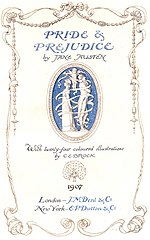Sometimes, people can roll their eyes in a good way. So when I proposed modelling indirect instruction to present indirect instruction to the class, the professor used phrases such as "you're brave," "this will be interesting," and "I like to see people take risks." It felt right, but I had a fair bit of work to do before I could believe that I was taking the right approach.
First things first, I had to say farewell to my favourite presentation tool, Prezis, since they're delightfully direct. Next, I said farewell to the presentation handout since the actual analysis of the methods would be done by the class. Bit by bit, I removed all of my safe havens and standard practices from the presentation and prepared to cede my presentation to the class. So, with a shell of a website to hold the presentation questions I needed, I started to consider the summary slide template. What was the main difference between direct and indirect instruction...
For me, it came down to one question... where is my personal balance between higher order thinking skills and time? I recognize that indirect instruction is necessary at times, because I can't teach a jump shot and I can't lecture a student's analysis, but what about those in-between areas? I know that I would rather rely more on indirect instruction, because the skills and critical thinking skills are far more important than the facts and figures, but what if? What if the exercise completely flops and I end up like Proust,
In Search of Lost Time? What if the class doesn't come to the understanding that I'd hoped they'd find, or they don't end up developing the skills that I'd anticipated?
In the end, I realized that the whole issue came down to trust. I realized that if I didn't trust my class in teachers' college, I would never be able to trust my own class. With this realization, I finally knew that I had the right approach. Throughout the presentation, I got to experience many of the positives and negatives of indirect instruction. Our flipped class on Viking Poetry flopped. Our unguided inquiry on 'love, friendship and the hero' went so well that I could barely wrestle the class back to move on to the next topic. Our PBL / case study went well despite me asking the wrong question - we just transitioned to a better question. And finally, we ran out of time and could never get to skill building / concept mapping.
Well, the web summary from the class is
here. The majority of the strengths, weaknesses, teacher role and students' role answers came from the class' guided organizers. The summary was primarily based on the ending discussion on the roles of direct and indirect instruction. Overall, the presentation was a resounding success that left me with only one bit of guilt. It's often said that indirect instruction results in the teacher learning as much as the class; in this case, I learned more since I not only learned about indirect instruction, but I learned how it felt to teach that way.



No comments:
Post a Comment